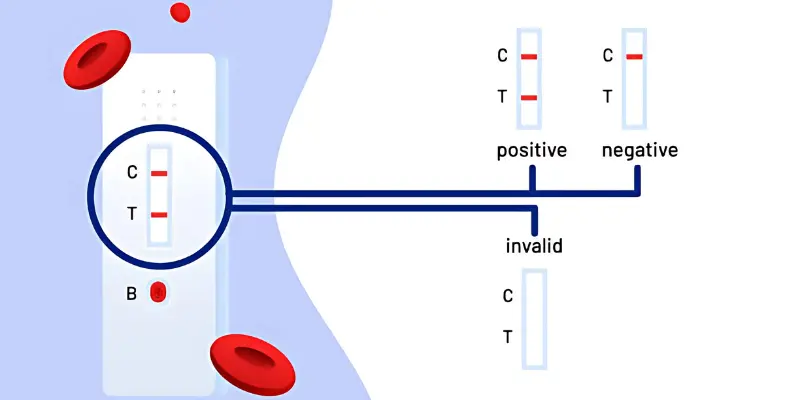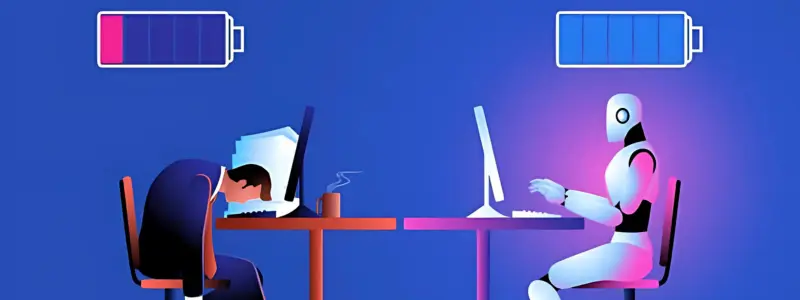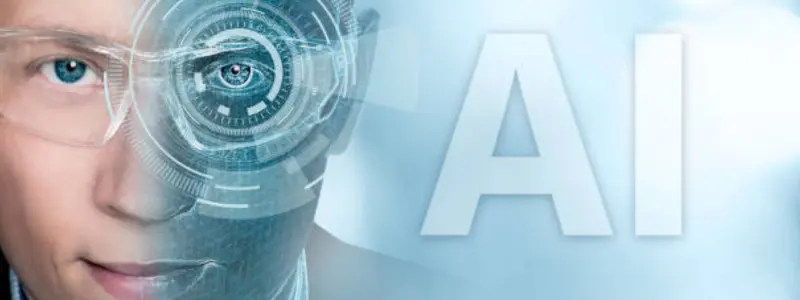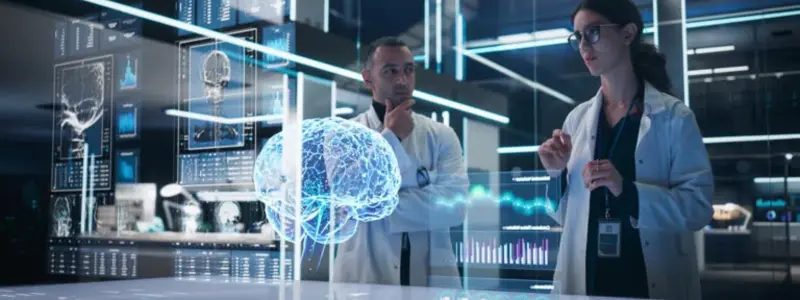AI in Cancer Detection: Cutting False Positives, Saving Lives
Published: 14 May 2025
Getting a cancer scare is one of the scariest moments anyone can face. Imagine going through painful tests, worrying for days, only to find out it was a false alarm. This is called a false positive. It means a test wrongly says you have cancer when you don’t.
False positives happen more than you think. They cause stress, cost money and lead to unnecessary treatments. That’s where AI in cancer detection steps in. AI helps doctors to read test results better. It finds real signs of cancer and helps avoid false ones.
Today, I am going to show you how AI is making cancer detection smarter and safer and explain how it works, why it matters and how it’s already helping doctors and patients. Let’s see how AI is cutting false positives and saving lives.

What Are False Positives in Cancer Detection?
A false positive means a test says you have cancer but you don’t. It’s like a false alarm. The test shows a problem but everything is actually fine.
This can happen during cancer screenings like mammograms, CT scans or blood tests. Sometimes, the images look unclear. Other times, harmless things like scars or cysts can look like cancer. Even trained doctors can make mistakes when things look tricky.
Example
Think about this. A woman goes for a routine breast cancer screening. Her test shows a spot that looks like cancer. She gets more tests, maybe even a biopsy. After days of waiting, she learns it was not cancer at all. She’s okay but she went through fear, stress and pain for nothing.
How Do False Positives Affect Patients?
False positives may seem like “better safe than sorry.” But they can cause real problems.
1. Emotional Stress
Getting told you might have cancer is terrifying. Even if it turns out to be nothing, those days of waiting feel like a nightmare. People often say they couldn’t sleep, eat or think clearly.
2. Costly Follow-Up Tests
A false positive usually leads to more tests like biopsies, scans or doctor visits. These tests can cost a lot, especially if insurance doesn’t cover everything.
3. Unnecessary Treatment
Sometimes, false alarms lead to unnecessary treatment. That might mean surgery or drugs that were not even needed.
4. Time Lost
False positives waste time. Time that could be used to check on real health issues or simply enjoy life.
How AI Helps Detect Cancer More Accurately
AI stands for artificial intelligence. It means smart computer programs that can learn from data. In cancer detection, AI looks at medical scans like X-rays, CT scans or MRIs and helps the doctors to find cancer signs.
How Does AI Work in Cancer Detection?
- It scans images quickly.
- It spots patterns that look like cancer.
- It compares the image to thousands of past cases.
- It gives a signal when something looks wrong.
AI does not guess. It learns from real medical data. And it keeps improving every time it reviews new cases.
Why Is This Helpful?
Doctors are amazing. But they are human. They can miss things, especially when scans look tricky or when they are tired. AI acts like a second expert. AI double-checks the images and helps doctors feel more confident.
Reducing False Positives with AI
One of the most powerful benefits of AI in cancer detection is its ability to reduce false positives. By using advanced technology, AI makes cancer screenings more accurate and helps doctors avoid unnecessary worry for patients. Let’s break down how AI helps in reducing false positives:
1. AI Learns to Spot Real Cancer Patterns
AI works by learning from millions of medical images. It looks at scans that show both cancerous and non-cancerous areas. Over time, it gets better at spotting patterns that are truly cancer-related, distinguishing them from normal, harmless growths.
For example, AI can tell the difference between:
- Cancerous tumors that look irregular or have certain shapes.
- Non-cancerous cysts or scars that might appear similar but are not harmful.
By learning from these patterns, AI helps doctors see the full picture more clearly, reducing the chance of mistakenly identifying something harmless as cancer.
2. AI Never Gets Tired
Doctors are experts in their jobs but they are human. Reading scans for hours or days can lead to tired eyes and mistakes. AI doesn’t get tired. It looks at every scan with the same level of focus which reduces the chance of missing something or misinterpreting an image.
- Example: A doctor might overlook a tiny detail on a scan but AI can catch that small clue and bring it to the doctor’s attention. This teamwork helps in reducing false positives.

3. AI Provides Consistent Results Every Time
One of the challenges in medical imaging is variability, sometimes doctors interpret images differently based on their experience or how clear the image is. With AI, every scan is analyzed with the same set of rules. This consistency means AI gives more reliable results for each patient.
AI doesn’t have “bad days” or make errors because it’s rushed. It analyzes every scan with the same careful steps by making sure that false positives don’t happen simply because a doctor missed something or misread an image.
4. AI Helps to Review More Scans in Less Time
Another big advantage of AI is speed. AI can review scans much faster than a human can. This means more patients can be checked in a shorter amount of time, without sacrificing accuracy. AI can quickly go through hundreds of scans and flag any that might need a closer look by a doctor.
- Real-Life Example: A study showed that AI used in breast cancer screenings helped to reduce false positives by 5.7%. By identifying areas of concern more accurately, fewer women had to undergo unnecessary biopsies and other follow-up tests which saved both time and money.
5. AI Acts as a Second Pair of Eyes
Doctors are highly skilled but no one is perfect. Having a second set of eyes on a scan can make a huge difference. AI doesn’t replace the doctor, it acts as a second safety net. After AI analyzes a scan, the doctor still makes the final decision. But AI catches things that might otherwise be missed.
For example, an AI system can alert a doctor if something suspicious pops up in a lung scan. The doctor will then review the results and decide if further tests are needed. This process helps in avoiding the situations where a doctor may wrongly think a scan looks clear, when in fact, there’s an issue that AI could have caught.

Does AI Replace Doctors?
When it comes to AI in cancer detection, one big question many people ask is:
“Does AI replace doctors?”
The simple answer is no—AI does not replace doctors. Instead, AI acts as a tool that helps doctors do their jobs better, more accurately and faster.
AI is a Tool Not a Replacement
AI in cancer detection is like a smart assistant for doctors. It can quickly scan images and highlight areas that need attention. But, just like any tool, it needs to be used by someone skilled, the doctor.
- Think of it like a hammer and a nail. The hammer doesn’t do the work by itself, it’s always used. Similarly, AI helps doctors make better decisions but it’s the doctor who makes the final call.
Doctors and AI Collaboration for Better Results
AI can’t replace the human touch, experience or intuition that doctors bring to the table. Doctors have years of training and experience that AI simply can’t replicate. They understand the full picture including the patient’s history, symptoms and emotional state.
What AI does is:
- Analyze large amounts of data quickly. It can look at thousands of medical images in a fraction of the time.
- Spot patterns in images that might be difficult for a human to notice.
- Reduce errors by acting as a second pair of eyes.
So, AI and doctors should work as a team. The doctor brings their knowledge and expertise while AI brings speed, precision and consistency. Together, they can reduce false positives, catch cancer earlier and help patients make better decisions.

AI is Like a GPS for Doctors
To make it even simpler, think of AI as a GPS:
- When you drive, the GPS gives you directions. But you are still one who is driving the car.
- Sometimes, the GPS suggests a route and sometimes it can be wrong. You decide if you should follow it.
- AI works the same way. It guides doctors in the right direction but doesn’t make the final decisions.
Challenges and Limitations of AI
While AI brings huge improvements to cancer detection, it’s important to understand its limitations. AI is powerful but it’s not perfect. Here are some of the key challenges:
1. AI Needs High-Quality Data
- AI systems depend on large amounts of data to learn and improve.
- If the data is incorrect or incomplete, AI might make mistakes.
- Not all healthcare facilities have access to the same quality of data, which can limit AI’s effectiveness.
2. AI Can Be Expensive to Implement
- Setting up AI systems in hospitals and clinics requires expensive equipment and trained personnel.
- The cost of AI tools can be a barrier for some healthcare settings, especially smaller clinics or those in low-resource areas.
3. AI is Only as Good as the Data it’s Trained On
- AI can sometimes struggle with uncommon cases or scans that don’t match the majority of data it was trained on.
- If a rare cancer type does not appear in the data used to train the AI, it might not be able to detect it as accurately.
4. Ethical and Privacy Concerns
- AI relies on patient data to make decisions, which can raise concerns about privacy and security.
- There’s always a risk that sensitive health information could be exposed or misused.
- Patients may feel uncomfortable knowing their data is being used to train AI systems.
5. AI Requires Human Oversight
- While AI can assist in decision-making, human expertise is still needed.
- Doctors must review AI’s suggestions and decide the best course of action. This means AI is not a complete replacement for human judgment.
- If AI recommendations are not carefully reviewed, there could be mistakes or misinterpretations.
6. AI Might Struggle with Complex Cases
- Some cancer cases are very complex and require a deep understanding of the patient’s medical history, lifestyle and other factors.
- AI might miss these subtle signs that a doctor could notice with their experience and expertise.
Tips for Patients: How to Talk to Your Doctor About AI Tools
AI in cancer detection is an exciting advancement but as a patient, it’s normal to have questions about how it works and what it means for you. If you are wondering how AI tools might play a role in your treatment or screening, here are some helpful tips for having a conversation with your doctor:
1. Ask How AI Is Being Used in Your Care
- Start by asking: “How does AI help in my cancer screening or diagnosis?”
- Be open to learning how AI tools can make the process faster, more accurate and less stressful.
- Example question: “How does AI help reduce false positives in my test results?”
2. Understand the Benefits of AI
- AI can improve accuracy and help in catching cancer earlier. Ask your doctor how it can benefit you personally.
- Example: “Can AI help detect cancers at an earlier stage when treatment is more effective?”
3. Discuss the Limitations of AI
- AI is a helpful tool but it’s not perfect. Ask your doctor about any potential limitations or risks of using AI in your care.
- Example: “What are the limitations of using AI in my tests? Could AI miss something that a doctor might catch?”
4. Ask About Privacy and Data Security
- AI systems use patient data to analyze scans. If you are concerned about privacy, ask how your data is being protected.
- Example: “How is my medical data kept safe when used for AI analysis?”
5. Be Informed About the Role of AI in Decision-Making
- AI can provide recommendations but the final decision is still up to the doctor. Make sure you understand how your doctor will use AI’s suggestions in your treatment plan.
- Example: “Will my doctor make the final decision about my treatment, even if AI makes a suggestion?”
6. Stay Involved and Ask Questions
- AI can help doctors but you are the most important part of your care. Always feel free to ask questions and express any concerns.
- Example: “If AI detects something suspicious, how will it affect my next steps?”
Conclusion
Hey Health Guru! It’s time to wrap up. AI is transforming the way we approach cancer detection. By reducing false positives, improving accuracy and supporting doctors in their decision-making, AI offers a powerful tool to catch cancer early and save lives. However, it’s important to remember that AI is not a replacement for doctors. Instead, it works alongside them to provide faster, more accurate results that benefit patients.
With AI continuing to evolve, the future of cancer detection looks brighter than ever. The combination of human expertise and AI technology is highlighting more precise, less stressful screenings and ultimately better outcomes for patients.
Explore the potential of AI in reducing false positives in cancer detection. Stay curious and don’t hesitate to learn more!
Questions, You Might Have After Reading the Article
Here are frequently asked questions about AI Reducing False Positives in Cancer Detection:
AI can be up to 95% accurate in certain cancer types, compared to 85-90% for experienced radiologists. However, accuracy varies depending on the cancer type and quality of images. The best results come when AI and doctors work together rather than separately.
While initial implementation costs of AI systems are high, they can reduce long-term expenses by preventing unnecessary procedures. Many hospitals are gradually incorporating AI, so patients might not see significant cost differences yet. Insurance coverage for AI-assisted diagnostics is still evolving but becoming more common.
AI shows the most promise in detecting cancers that rely heavily on imaging like breast, lung and skin cancers. Detection capabilities for blood cancers or rare cancers are still developing. New AI models are constantly being trained for different cancer types.
AI can analyze images in seconds or minutes, compared to hours or days for human review alone. This speed can significantly reduce waiting times for preliminary results. Final confirmation still requires a doctor’s review but the overall process is faster.
AI tools are currently more common in large research hospitals and specialized cancer centers. Smaller clinics and rural hospitals are gradually adopting these technologies. Availability varies widely by location and healthcare system.
The doctor always makes the final decision when there’s disagreement with AI recommendations. Additional tests or a second opinion might be ordered to resolve uncertainties. This collaborative approach actually improves overall diagnostic accuracy.
Developers are working to include more diverse datasets representing different ethnicities, ages and body types. Historical biases in medical data are being addressed to make AI more equitable. This remains an active area of improvement in AI development.
Yes, patients generally have the right to opt out of AI-assisted analysis. Discussing preferences with your doctor beforehand is recommended. Traditional screening methods remain available in most healthcare settings.
Patient data is typically anonymized before being used to train AI systems. Strict healthcare privacy laws (like HIPAA in the US) govern how this data can be used. Most reputable AI developers implement multiple layers of security to protect sensitive information.
Some preliminary AI tools for skin cancer screening are already available through smartphone apps. At-home screening will likely complement rather than replace clinical visits. Full diagnostic capabilities will remain in clinical settings for the foreseeable future.





